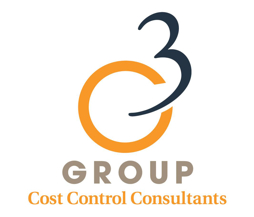Benefits Buzz Newsletter - June 2021
HSA/HDHP Limits Increase for 2022
On May 10, 2021, the IRS released Revenue Procedure 2021-25 to provide the inflation-adjusted limits for health savings accounts (HSAs) and high deductible health plans (HDHPs) for 2022. The IRS is required to publish these limits by June 1 of each year.
Eligible individuals with self-only HDHP coverage will be able to contribute $3,650 to their HSAs for 2022, up from $3,600 for 2021. Eligible individuals with family HDHP coverage will be able to contribute $7,300 to their HSAs for 2022, up from $7,200 for 2021. Individuals who are age 55 or older are permitted to make an additional $1,000 “catch-up” contribution to their HSAs.
The minimum deductible amount for HDHPs remains the same for 2022 plan years ($1,400 for self-only coverage and $2,800 for family coverage). However, the HDHP maximum out-of-pocket expense limit increases to $7,050 for self-only coverage and $14,100 for family coverage.
Download entire newsletter below:
Legal Update: IRS Issues Guidance on American Rescue Plan’s COBRA Subsidy
IRS Issues Guidance on American Rescue Plan’s COBRA Subsidy
On May 18, 2021, the IRS issued Notice 2021-31, a guidance document on the American Rescue Plan Act (ARPA) subsidy for continuation health coverage under the Consolidated Omnibus Budget Reconciliation Act of 1985 (COBRA).
The Notice discusses the background of the subsidy and includes 86 questions and answers (Q&As) about its application.
The COBRA Subsidy
The ARPA subsidy covers 100% of COBRA and state mini-COBRA premiums from April 1–Sept. 30, 2021, for certain assistance-eligible individuals whose work hours were reduced or whose employment was involuntarily terminated. The subsidy is funded via a tax credit provided to employers, insurers or group health plans, according to the terms of the statute.
The IRS Guidance
Among the topics covered by the 40-page Notice are how to calculate and claim the tax credit, including when a third-party payer is involved. According to the guidance, employers must document individuals’ eligibility for COBRA premium assistance in order to claim the credit.
The Q&As further clarify that:
- The subsidy is available for extended periods of COBRA coverage between April 1 and Sept. 30, 2021, due to a disability, second qualifying event or extension under state mini-COBRA.
- Involuntary termination includes constructive discharge and termination for cause, but not gross misconduct.
- Health reimbursement arrangements, dental-only plans and vision-only plans are covered by the subsidy.
Download entire PDF below:
HR Compliance Overview: The Family and Medical Leave Act (FMLA)
This Compliance Overview provides a summary of the Family and Medical Leave Act (FMLA).
The Family and Medical Leave Act (FMLA) is a federal law that provides eligible employees of covered employers with unpaid, job-protected leave for specified family and medical reasons. Under the FMLA, eligible employees may take leave for their own serious health conditions, for the serious health conditions of family members, to bond with newborns or newly adopted children or for certain military family reasons.
In addition to providing eligible employees with an entitlement to leave, the FMLA requires that employers maintain employees’ health benefits during leave and restore employees to their same or equivalent job positions after leave ends. The FMLA also sets requirements for notices, by both the employee and the employer, and provides employers with the right to require certification of the need for FMLA leave in certain circumstances.
The FMLA is enforced by the Department of Labor (DOL).
Download full document below:
Pennsylvania Compliance Bulletin: May 2021
HSA/HDHP Limits Increase for 2022
On May 10, 2021, the IRS released Revenue Procedure 2021-25 to provide the inflation-adjusted limits for health savings accounts (HSAs) and high deductible health plans (HDHPs) for 2022. The IRS is required to publish these limits by June 1 of each year. These limits include:
- The maximum HSA contribution limit;
- The minimum deductible amount for HDHPs; and
- The maximum out-of-pocket expense limit for HDHPs.
These limits vary based on whether an individual has self-only or family coverage under an HDHP.
Eligible individuals with self-only HDHP coverage will be able to contribute $3,650 to their HSAs for 2022, up from $3,600 for 2021. Eligible individuals with family HDHP coverage will be able to contribute $7,300 to their HSAs for 2022, up from $7,200 for 2021. Individuals who are age 55 or older are permitted to make an additional $1,000 “catch-up” contribution to their HSAs.
The minimum deductible amount for HDHPs remains the same for 2022 plan years ($1,400 for self-only coverage and $2,800 for family coverage). However, the HDHP maximum out-of-pocket expense limit increases to $7,050 for self-only coverage and $14,100 for family coverage.
Employers that sponsor HDHPs should review their plan’s cost-sharing limits (minimum deductibles and maximum out-of-pocket expense limit) when preparing for the plan year beginning in 2022. Also, employers that allow employees to make pre-tax HSA contributions should update their plan communications for the increased contribution limits.
Download entire bulletin below:




